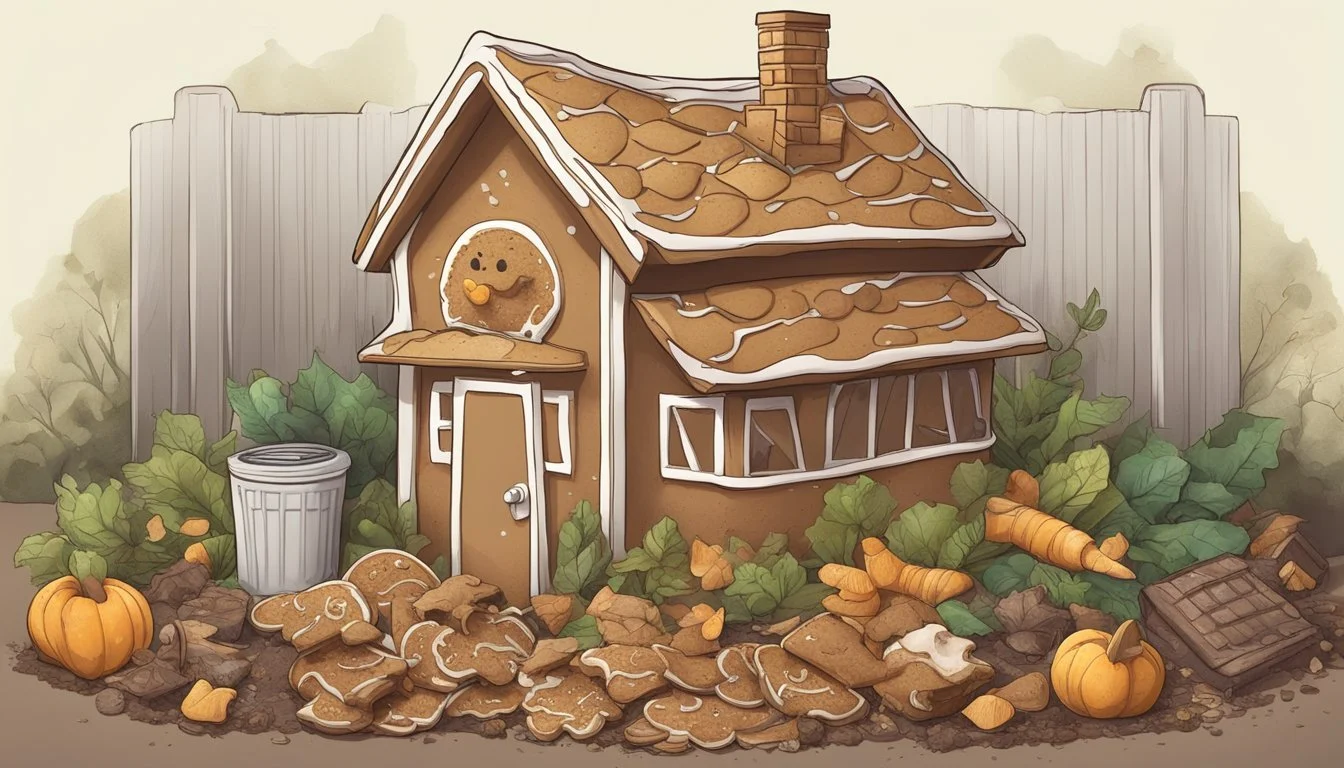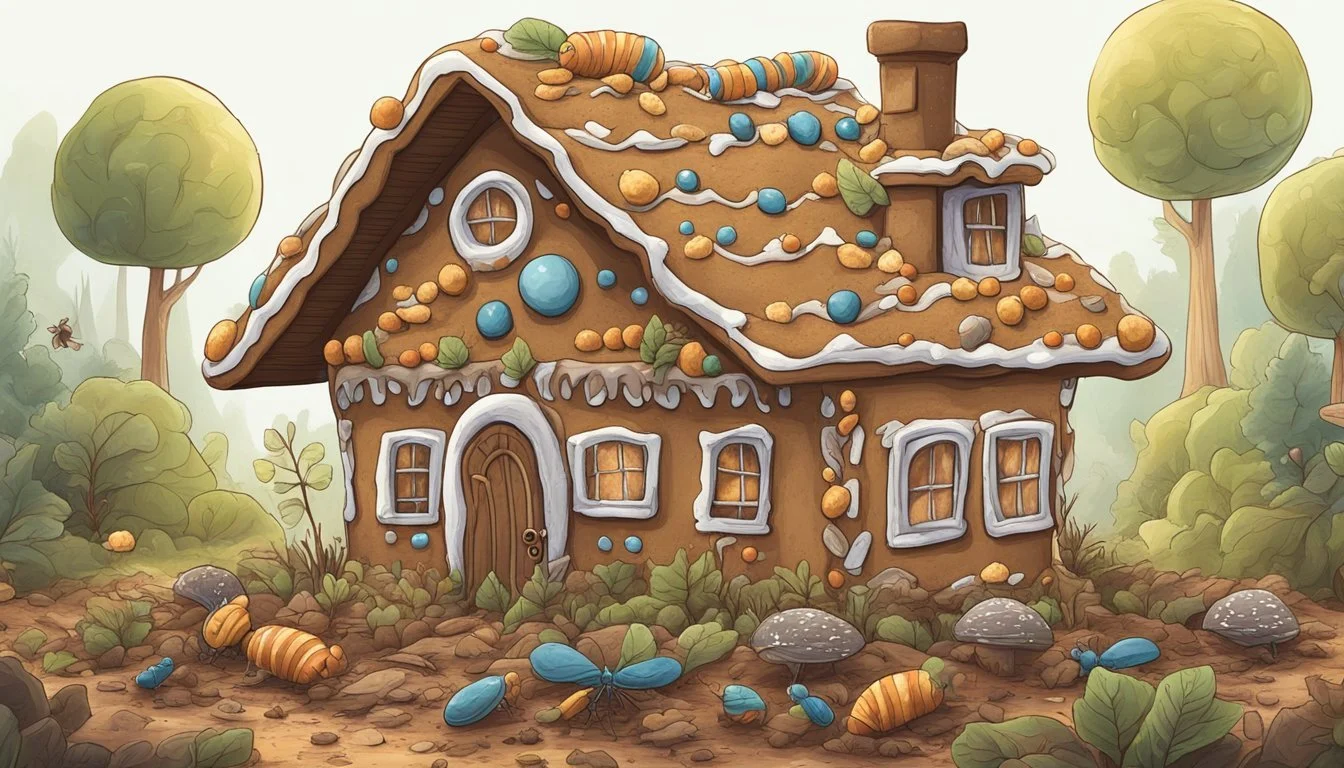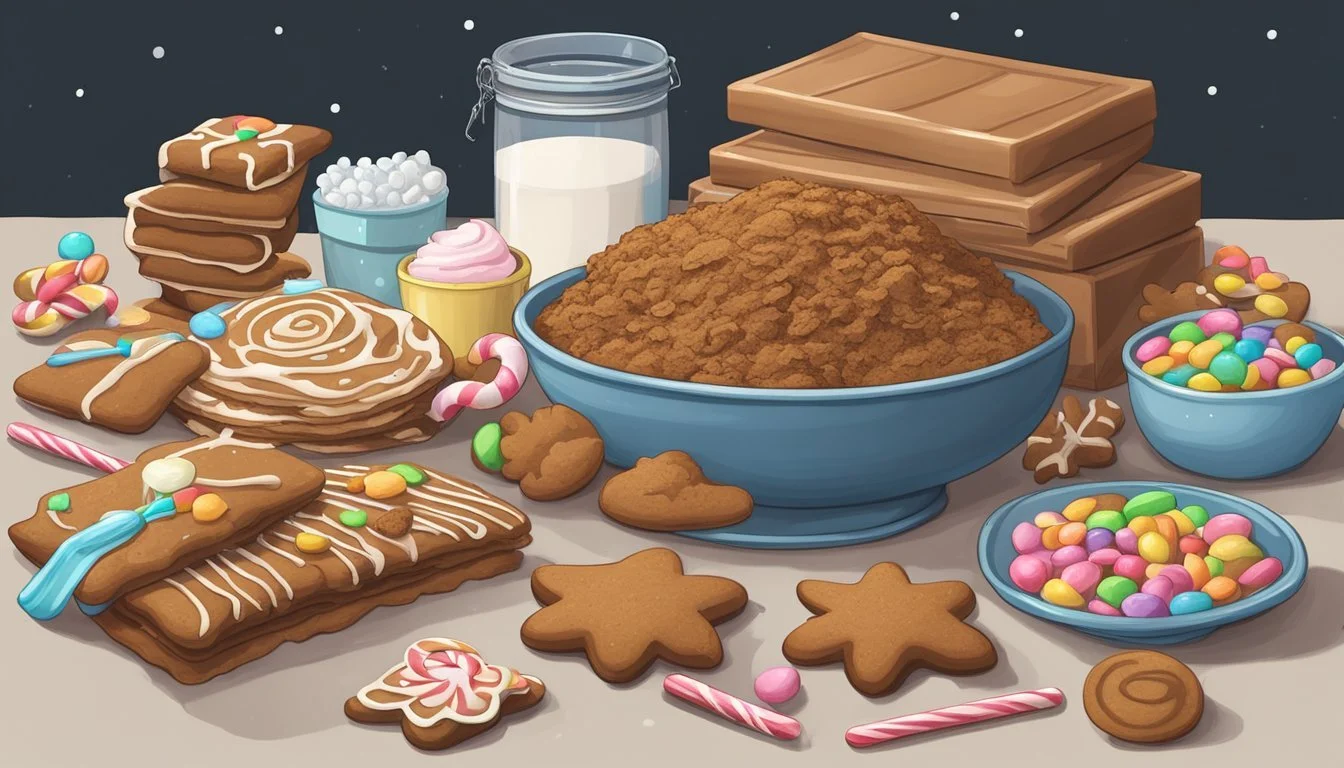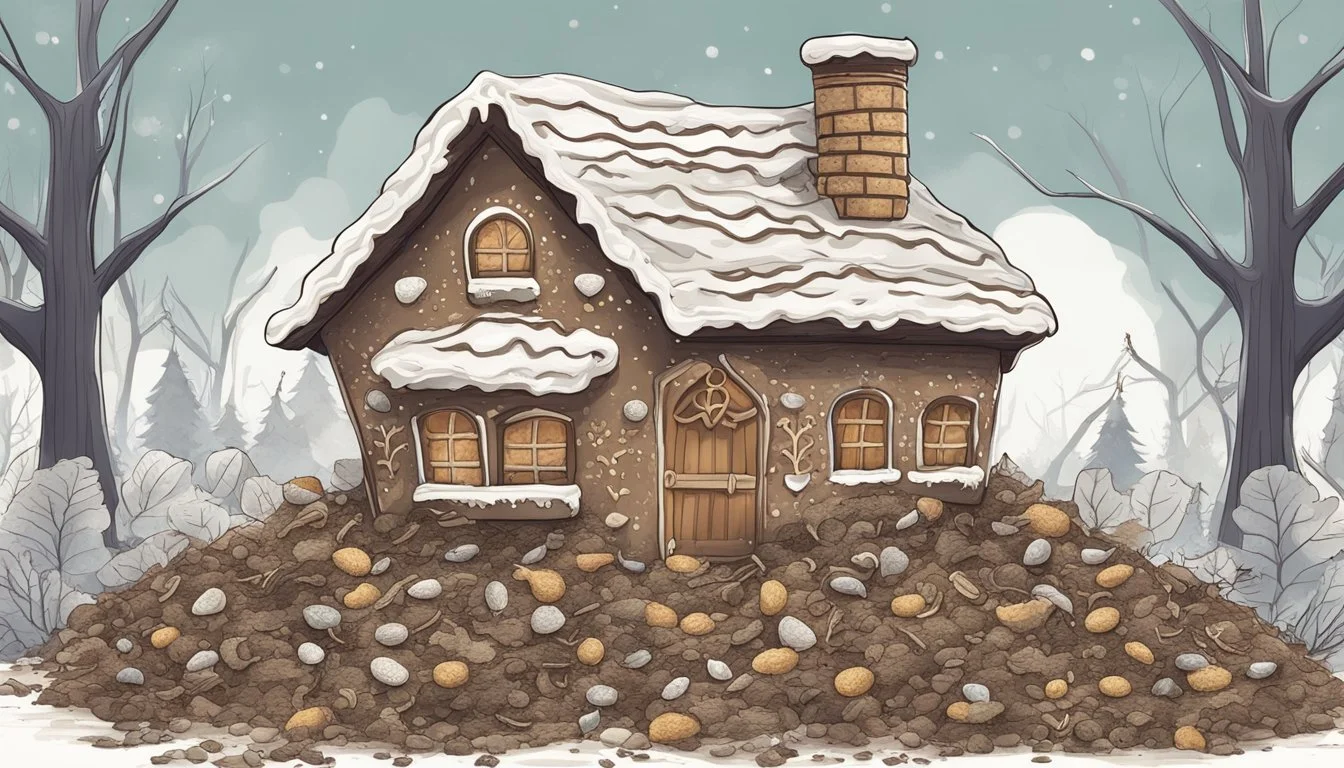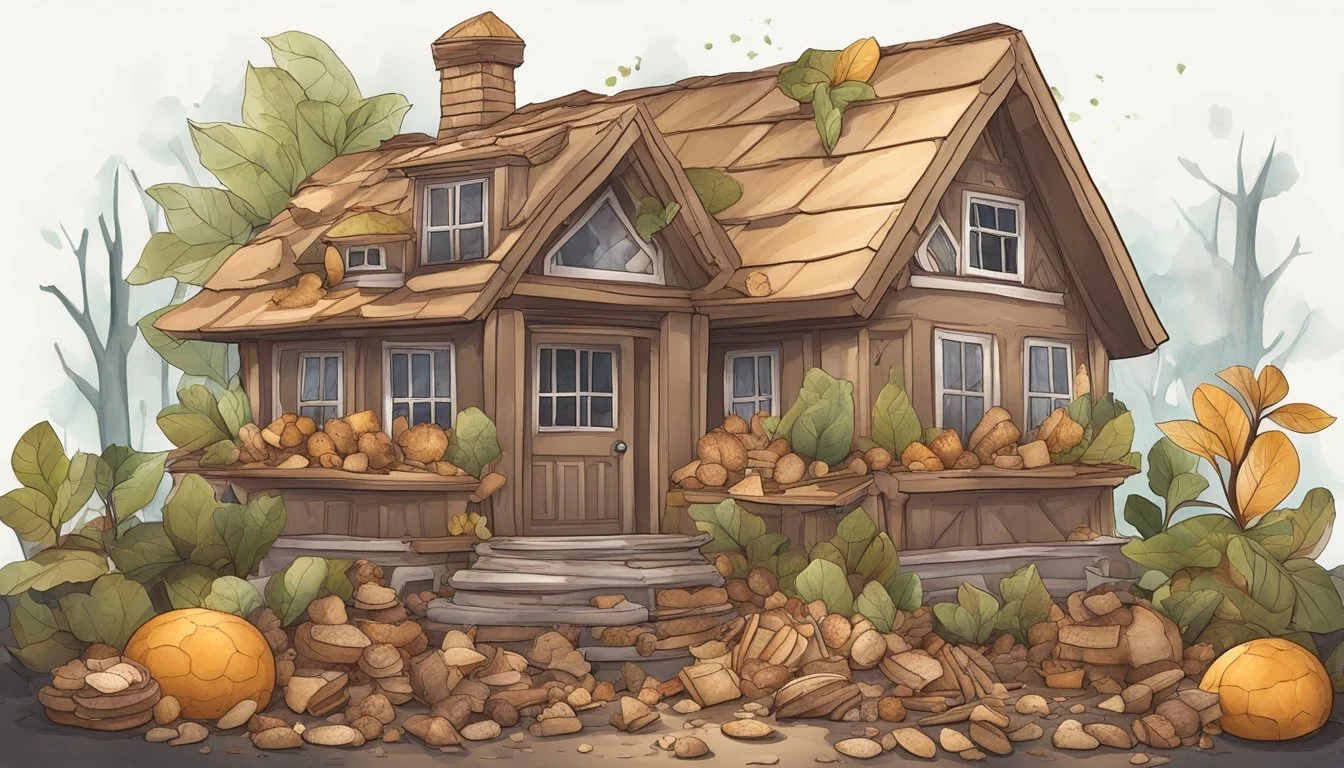Can You Compost a Gingerbread House?
The Simple Guide to Eco-Friendly Disposal
Many people wonder if it is possible to compost their gingerbread houses post-holiday season. Given that composting is an environmentally friendly way to recycle organic materials, this question has a straightforward answer. Gingerbread houses, typically made from flour, sugar, and spices, are indeed compostable. These edible structures can be broken down naturally and turned into nutrient-rich soil. However, it's essential to remove all non-compostable decorations before adding the gingerbread to your compost bin.
The decorations on gingerbread houses, such as candies, icing, and plastic or metal elements, require separate handling. Hard candies and icing may contain elements that don't break down in the composting process and could attract pests if left unattended. Any ornaments that are not biodegradable should be removed and disposed of according to your local waste management guidelines to ensure a clean and efficient composting process.
When composting a gingerbread house, one should break it into smaller pieces to accelerate the decomposition process. This allows microorganisms in the compost pile to work more quickly, breaking down the gingerbread into organic matter that will enrich the soil. Considering this step ensures a successful transformation from holiday decoration to garden nourishment, without contributing to landfill waste.
Understanding Gingerbread Houses
Gingerbread houses are a charming and festive tradition, often linked to the Christmas holiday. Their origins can be traced back to Germany in the 1800s, and they have since become a beloved activity worldwide. These edible structures are crafted using gingerbread, an aromatic cake-like bread made with ginger and other spices. The texture of gingerbread is firm and sturdy, which makes it an excellent building material for constructing walls and roofs.
The design of a gingerbread house can vary greatly, with some mimicking traditional architectural styles and others showcasing more whimsical or imaginative themes. Enthusiasts often use a template for precision and consistency when cutting out the gingerbread pieces for baking. Here’s a brief look into the essential components of these confectionery constructions:
Roof and Walls: Firm gingerbread is baked into flat panels to serve as the main support structures.
Decoration: Royal icing is the adhesive of choice, both for its drying strength and edibility. Various candies and edible decorations add color and texture to the display.
Display: Once assembled and decorated, gingerbread houses are often displayed as festive centerpieces.
When considering the edibility of gingerbread houses, it is important to note that while the materials are generally safe to eat, houses on display for extended periods may no longer be fresh. Additionally, consideration should be given to any non-edible decorative elements used in the design.
Materials and Ingredients for Gingerbread Houses
Creating a gingerbread house involves several components, from the dough to the decorations. This section explores the essentials you’ll need for building, designing, and preserving your gingerbread creation.
The Basics of Baking Gingerbread
A typical gingerbread dough is composed of ingredients such as all-purpose flour, unsalted butter, brown sugar, baking soda, salt, and spices like ground ginger and ground cinnamon. It's essential to follow a trusted recipe to ensure the dough is sturdy enough for building.
Decorative Elements
For adornments, a variety of decorations such as gumdrops, sprinkles, candy canes, and M&M's (how long do m&m's last?) are common. These elements add color and detail to the gingerbread house, bringing the design to life.
Assembling and Displaying
Royal icing acts as a cement to hold together the walls and roof. It's important to pipe it along the edges, or seams, of each piece to secure them. Templates help maintain consistent size and shape for each part of the house.
Preservation Techniques
To preserve a gingerbread house, store it in a cool, dry place away from direct sunlight. Wrapping it in plastic wrap and placing it in a container can extend its display life.
Tools and Equipment
Essential equipment includes a rolling pin, sharp knife, cutting board, and various cookie cutters. A piping bag with a piping tip is necessary for detailed icing work.
Additional Supplies
Additional supplies such as parchment paper ensure easy handling of gingerbread pieces, and royal icing is used to assemble and decorate your house. For those creating more complex designs, food coloring can enhance the visual appeal.
Safety and Storage
Store the components and assembled house carefully. Keep the dough refrigerated until use, and once baked and decorated, keep the house in a way that prevents moisture and pests from causing damage.
Holiday and Cultural Impact
Gingerbread houses are a holiday staple, often associated with Christmas traditions and family activities. They can represent anything from a simple cake decoration to a fully developed Christmas tree decoration.
Educational Activities
Building a gingerbread house can be an educational activity, teaching elements of design and architecture. It's used in settings such as high schools and at events like the Gingerbread Build-Off at the Architecture Center Houston.
Professional Tips
Professional advice often recommends practicing piping skills and pre-assembling sections of the house to minimize frustration during the final assembly. Pastry chefs may also recommend creating a sturdy base using a baking sheet or cake board.
Gingerbread House Kits
For convenience, gingerbread house kits are available and typically include pre-baked pieces, royal icing, decorations, and instructions. This allows for a quicker setup, especially helpful for beginners or those with time constraints.
Can You Compost a Gingerbread House?
Composting offers a sustainable way to recycle certain kitchen wastes into nutrient-rich soil. When it comes to gingerbread houses, they can be broken down and added to a compost pile under the right conditions.
Composting Basics
Composting is a process that turns organic waste into a valuable amendment for soil. An effective compost requires the right balance of green materials (like vegetable scraps) that provide nitrogen and brown materials (such as leaves) that supply carbon.
Decomposition of Gingerbread Houses
A gingerbread house is primarily made of bread and edible decorations. Since bread is a compostable material, it will undergo the natural process of decomposition by the action of microorganisms, eventually turning into compost.
Effects on Composting Ecosystem
Introducing a gingerbread house to your compost can attract insects and animals, potentially turning your compost bin into a target for pests. To minimize this risk, ensure the compost is managed properly to deter wild animals and bugs.
Considerations Before Composting
Before adding a gingerbread house to compost:
Remove any non-edible decorations and materials, like plastic wrap.
Break down the house into smaller pieces to accelerate decomposition.
Consider the balance of your compost – too much bread can attract mold and pests.
Alternatives to Composting
If composting is not feasible:
Donate the gingerbread house to a local community center.
Use it as a snack for birds in your yard (only if it lacks harmful decorations).
Eco-Friendly Disposal Options
Dispose of your gingerbread house in an eco-friendly manner by:
Burying pieces of the house directly in the garden as a soil amendment.
Using it as part of decorating a Christmas display in your yard.
Benefits and Challenges of Composting Gingerbread Houses
Benefits:
Reduces waste added to landfills.
Enriches soil in your garden or yard.
Challenges:
Risk of pests and wild animals if the compost is not managed correctly.
Moisture control within compost can become a challenge due to edible materials.
Conclusion
When considering the disposal of a gingerbread house, composting is a viable option that is both eco-friendly and beneficial for garden health. However, there are important factors to ensure the process is successful.
Composting Requirements
Temperature: Compost should reach 130-140 degrees Fahrenheit to eliminate pathogens like E. coli.
Materials: Only compost gingerbread houses free of non-biodegradable decorations or materials.
Considerations for Composting
Decoration Removal: Ensure all inorganic and non-compostable decorations are removed before composting.
Monitoring: Keep an eye on the compost pile to maintain adequate temperatures.
If managed correctly, the organic components of a gingerbread house can be broken down in a compost pile. Those who are knowledgeable about composting can feel confident in understanding that sugar and gingerbread can decompose effectively under the right conditions. Composting can reduce waste and support a thriving garden ecosystem.
To summarize, a gingerbread house can be composted if one is knowledgeable about the composting process, confident about maintaining the necessary conditions, and diligent in removing inedible decorations. It’s crucial that individuals approach this process with the clear goal of creating a healthy and safe compost for their gardens.
References and Further Reading
When researching the compostability of gingerbread houses, individuals may consult a variety of sources to gain a comprehensive understanding. Scholarly literature and case studies provided by academic institutions can offer insights into the biodegradability of components like gingerbread and decorations.
Below is a list of selected literature and resources that may aid in further exploration:
Academic Journals: Researchers can look for peer-reviewed studies on composting food items similar to gingerbread to better understand the breakdown process and impact on compost health.
Gardening Guides: Readers interested in practical application may refer to gardening books or online guides that discuss composting kitchen waste, which often include sections on confectionery items.
Recipes and Composition: Cookbooks or websites that offer gingerbread house recipes could provide valuable information about ingredients, which is crucial to determine compostability. Ingredients that contain excessive artificial colors or preservatives might influence compost quality.
Online Forums and Discussions:
Gardening forums often feature discussions on composting various household items, where experienced composters share their insights on composting gingerbread houses and decorations.
For those who prefer concise guidelines:
Look for articles explaining compost pile requirements to ensure proper breakdown of organic material.
Check community guidelines on composting, as they often include do's and don'ts relevant to baked goods and confections.

